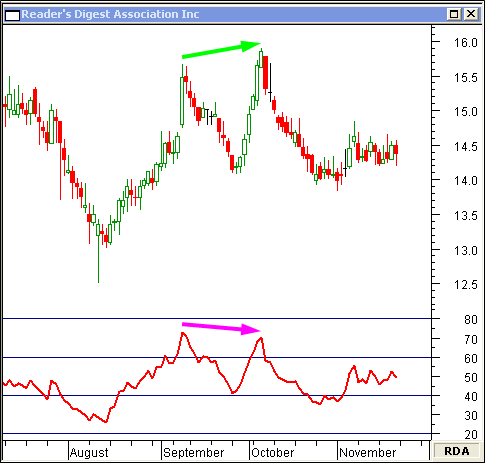
By including intangible assets in a potential valuation, a business owner has the metrics they need to appropriately price their company, likely at a higher multiple than by measuring just its tangible assets. Employers will make a decision based on a variety of factors, including their ability to pay and philosophical views. As long as everybody is informed about the fees and tradeoffs, the best approach is the one that allows the business to provide a benefit to employees at a reasonable cost. As the Derbyshire Charge satisfied the statutory requirements of para 14, the court determined that it was a qualifying floating charge.

Most people don’t know how 401(k) plan service providers get paid, and they may even assume their plan is “free.” Even with increased fee disclosure, it’s not always clear where the money comes from and where it goes. This page will give you a basic understanding of how 401(k) plan assets turn into revenue for service providers, and why it’s important to watch asset based fees over time. The directors of the company or the holder of a qualifying floating charge can use the “out-of-court” process to appoint an administrator, which is a simple, paper-based exercise. Relatively short, prescribed form documents are filed at court, with the administrator’s appointment taking effect when the documents are stamped by the court office.
Definition of Fixed Charge
Publications symmetric adjustment of the equity capital charge calculations before December 2019 . In undertaking the impairment analysis, Santos has used future oil price estimates which assume short-term market prices for four years, reverting to a long-term price of US$90 real from 2019 (refer Note 1 below). Santos advises that it expects to recognise a non-cash impairment charge of approximately $1.6 billion after tax in its 2014 full-year accounts. Justin Pritchard is not affiliated or registered with Cetera Advisor Networks LLC.
First Citizens BancShares, Inc. (NASDAQ:FCNCA) Q2 2023 Earnings Call Transcript – Yahoo Finance
First Citizens BancShares, Inc. (NASDAQ:FCNCA) Q2 2023 Earnings Call Transcript.
Posted: Fri, 04 Aug 2023 19:49:20 GMT [source]
To come to any other conclusion would render paragraph 15 of Schedule B1 (which allows a second or subsequent ranking secured creditor to appoint administrators with the consent of prior ranking secured creditors) effectively redundant. The Derbyshire Charge was therefore held to be enforceable as the loan was still outstanding at the time the administrators were appointed. It has been suggested that the company’s assets could be valued and then a view reached on the percentage of assets that would need to be charged for the lender to have a qualifying floating charge. It may be unlikely that the borrower has had all of its assets valued at the point it grants the security, so it may be difficult to ascertain the proportionate value of the assets being carved out. Even if the assets had been recently valued, asset values can change over time, and the point at which the lender is required to have a charge over “the whole or substantially the whole” of the relevant company’s assets in order to have a qualifying floating charge is not clear.
What Is a Floating Charge?
It could be argued that it should be assessed when the lender seeks to enforce the charge. Conversely, a purist view would be that the valuation should take place at the time at which the charge was granted. When the Quebec Civil Code came into force in 1994 and superseded the Civil Code of Lower Canada, it abolished the charge flottante “floating charge” and created and introduced an analogous security device into Quebec law under the name hypothèque ouverte, or “floating mortgage”. Fixed Charge is created on fixed asset, no matter if they are tangible or intangible. Unlike Floating Charge, which covers the current assets of the company, which varies from time to time. Moreover, when the borrower defaults in the payment of outstanding debt, the floating charge becomes fixed charge.
Iran seeking to receive frozen assets in multiple nations: Foreign … – Tehran Times
Iran seeking to receive frozen assets in multiple nations: Foreign ….
Posted: Mon, 07 Aug 2023 14:33:46 GMT [source]
There was no additional condition in para 14 that there ought to be any assets available at the time the charge was created. “Where the charged property is stock, or book debts – ie where the assets are naturally fluctuating – the court will readily conclude that a liberty for the chargor to deal with the charged assets is inconsistent with a fixed charge. Where … the assets are specific and do not necessarily fluctuate, some liberty to release the charged assets may not be inconsistent with a fixed charge”. Simply scroll down to get to know financial advisors featured on Wealthtender who offer financial planning and investing services for an asset-based fee. Click to view their full profile to learn more about each financial advisor and if they are a good fir for your individual needs. If the company repays the loan as agreed, it can continue to buy and sell inventory as needed.
Impairment of assets: non-cash charge of $1.6 billion after tax
Therefore, it’s essential to be aware of the different types of bank charges and how they work. This knowledge can help individuals and businesses make informed decisions about their financial activities and navigate the banking system more effectively. We are increasingly seeing requests from borrowers to carve-out assets from the scope of a lender’s otherwise all asset English security package.
The debtor can deal with these assets in the normal course of business until a certain event occurs, such as the debtor defaulting on the loan. At this point, the floating charge “crystallizes” into a fixed charge, and the bank can claim the assets to recover its money. Crystallization is the process by which a floating charge converts into a fixed charge. If a company fails to repay the loan or enters liquidation, the floating charge becomes crystallized or frozen into a fixed charge. With a fixed charge, the assets become fixed by the lender so the company cannot use the assets or sell them.
Understanding a Floating Charge
Some companies even use restructuring charges as a device to improve future earnings and profitability. By taking large restructuring charges, firms reduce depreciation in future periods and thus increase earnings. This is accentuated when profitability is measured on a return basis since the book value of capital and equity is also reduced by large restructuring charges. However, some companies incorrectly record charges that they repeatedly incur in the course of their usual business activities as one-time charges.
Often an administration is used in order to achieve the statutory objective of making a distribution to the company’s secured creditor(s), i.e. administration can be a means by which a secured creditor enforces and realises its claims. Lenders will often take a sweeping floating charge over all of the borrower/obligor’s assets which are not already subject to a fixed charge. This provides the benefit of having a security interest over all of the borrower/obligor’s assets (and so priority on returns from those assets over unsecured creditors, subject to the required statutory deductions), but it also has the benefit of providing the lender with a qualifying floating charge (discussed below).

A qualifying floating charge is a charge which covers “the whole or substantially the whole” of the relevant company’s property. Currently there is no English case law as to what specific threshold would need to be met for the charge to cover “substantially the whole” of the company’s property. Therefore, carving out any assets from the floating charge runs the risk of the charge not being a qualifying floating charge (the implications of which are discussed below). A one-time charge, in corporate accounting, is a charge against a company’s earnings that the company’s managers expect to be an isolated event and is unlikely to occur again. Current assets are those business possessions that the firm can quickly liquidate for cash and include the accounts receivable, inventory, and marketable securities, among other items. For example, if inventory is used as collateral for a loan, the company can still sell, restock, and change the value and quantity of its inventory.
This has received some judicial support, from Lord Walker in Spectrum, for example. The floating charge has been described as “one of equity’s most brilliant creations.”[1] They are legal devices created entirely by lawyers in private practice; there is no legislation or judicial decision that was the genesis of a floating charge. Floating charges take effect in equity only, and consequently are defeated by a bona fide purchaser for value without notice of any asset covered by them. In practice, as the charger has power to dispose of assets subject to a floating charge, so this is only of consequence in relation to disposals that occur after the charge has crystallised. Most asset based fees are part of your plan’s “investment expenses.” They come out invisibly every day. From there, revenue might be shared with other organizations that work with your plan.
We earn a nominal monthly fee from financial advisors and firms in exchange for providing access to the benefits described on this page, subject to these terms. This compensation creates a conflict of interest when we favor their promotion over others. The floating charge ‘floats’ or ‘hovers’ until the point at which it is converted (“crystallised”) into a fixed charge, attached to specific assets of the business. In most common law jurisdictions it is an implied term in the security documents creating floating charges that a cessation of the company’s right to deal with the assets (including by reason of insolvency proceedings) in the ordinary course of business leads to automatic crystallisation. Additionally, security documents will usually include express terms that a default by the person granting the security will trigger crystallisation. In an age where multiple secured lenders are much more common, this decision will be welcomed by second or subsequent security holders as it reassures them that their charge is valid and enforceable despite the crystallisation of a prior ranking charge and irrespective of the availability of assets to satisfy it.
- This knowledge can help individuals and businesses make informed decisions about their financial activities and navigate the banking system more effectively.
- Relatively short, prescribed form documents are filed at court, with the administrator’s appointment taking effect when the documents are stamped by the court office.
- While the price you pay to a financial advisor under the AUM fee model is calculated based upon the assets they manage for you, you will likely receive additional services such as the development of a financial plan for no additional cost.
- And we want to help connect people to the best financial advisors for their individual needs.
- Whether the goal is to sell a lone hamburger or an entire hamburger business, arriving at an appropriate valuation is crucial for both parties to be happy.
Lenders should ensure that security documents are clear and seek to maximise control over assets (whilst balancing the chargor’s business needs). We anticipate that lenders will continue to exercise caution and suspect that there will be little change to current practice in this area. We’re excited to help more people understand the benefits of working with financial advisors who offer asset-based pricing. And we want to help connect people to the best financial advisors for their individual needs.
A lender who has a qualifying floating charge has an additional, and important, enforcement route of being able to appoint an administrator via an out-of-court appointment process. Administration is one of the key insolvency processes in England and Wales, which involves charge on assets an administrator being appointed to take control of a company with the aim of either rescuing it or realising its assets for the benefit of creditors. Administrators have broad powers, including the ability to run a company and to sell its assets and wind it down.
As most secured lenders will not usually have recourse to their security until the debtor company is in a parlous financial state, the usual position is that even all the remaining assets of the company are not enough to repay the debt secured by the floating charge, leaving the unsecured creditors with nothing. This perception has led to a widening of the classes of preferred creditors who take ahead of the floating charge holders in a number of countries. The introduction of a regime of voidable floating charges for floating charges taken just prior to the onset of insolvency is a partial response to these criticisms.

Property Edge subsequently sought to borrow £3.9m to finance the acquisition of development land for the purpose of constructing 23 residential apartments. This money was loaned to Property Edge by the Derbyshire Building Society (“Derbyshire”). The security granted to Derbyshire in relation to this loan included a first ranking mortgage debenture which created a floating charge over all of the assets of Property Edge (the “Derbyshire Charge”).
